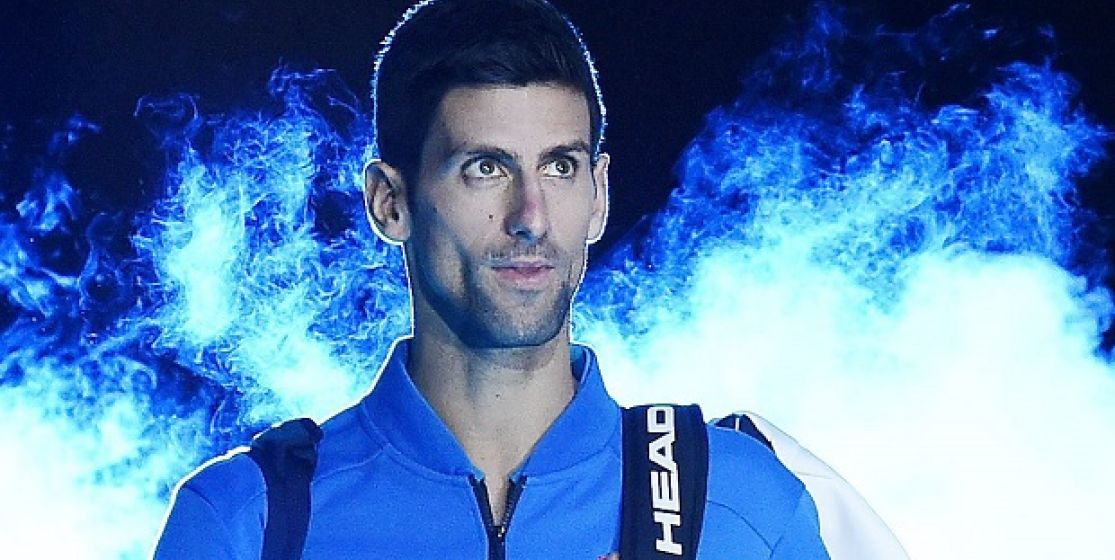During an exceptional season marked by eight epic duels against a spectacular Roger Federer, the undisputed world number one has always seemed to embody some kind of Evil. An amazing villain who always wins in the end, for once.
All the men that climb the same summit are not all equal. If the mountain always peaks at the same height, each climber tries to tame the altitude in his own way. Thus, all the world number one are not equal. And at the end of 2015, which saw Novak Djokovic finish the season by winning five consecutive tournaments, it should be added that very few ascensions can compete with that of the Serb. And since stories are stronger than numbers, here’s one to summarize the incredible performance of the Serb: apart from the Doha tournament - the first of the season - Djokovic reached the final of every tournament he played. Every Grand Slam tournaments (three victories out of four), every Masters (six victories out of eight) and all the others. As the desert’s sun, Nole's domination was never shadowed in 2015, Novak Djokovic proved that he was stronger than everyone on every surfaces.
Roger and the public
Yet, when he entered the court of the final of ATP World Tour Finals, the crowd resisted him the most pronounced applause. As at the US Open and Wimbledon a few weeks ago, Djoko needed not only to beat Federer, he also had to win the crowd. And it’s here that the feat of the Serb reached an unconventional dimension: in 2015, Djokovic found the strength to tear the good guy's scenario and authoritatively impose his own. The one of the big bad player, of the people crying at the end and darkness replacing the sun. The roles have been distributed a long time ago, if not since the beginning. Federer has the stately elegance on his side, while Djokovic pulled the costume of the meticulous Soviet athlete. Against the dazzling accelerations and lightness of the Swiss running to the net, Djokovic seems to fight with dull out of date weapons. He's said to be strong, tough, thorough, regular. And great, then? Inevitably, in the mouths of Federer's fans, who filled 90% of the stands of the O2 Arena last Sunday, Djoko is actually really annoying. But how to tame this bull with multiple human faces hidden in the shadows of a huge stadium in the dark?
Rituals and control
By methodically controlling the only thing he can control at that precise moment: the ball. When he walks to the ball boy to ask for three or four balls, Djoko is sometimes angry, irritated, even really mad. He grabs, feels, caresses and then selects a first time. With a skilful touch, he then rolls the two spheres in his hand before slipping one into his pocket. At that time, and it was systematic on Sunday night, the public still screams in his ears yet another "Come on Roger!", "Let's go Roger!" Or "Go Roger!". But while the crowd knows how to be insistent and heavy-going, and that Djoko's thin calves don't seem - at first sight – not to be suited for such a nerves fight, the Serb specifically chooses this moment to answer and take the upper hand. One, two, three, four, five, six. The racquet bounces the ball six times, and then turned around and bounces it a seventh time on the floor. The public is getting quieter, impatient perhaps. And Djoko starts again, unperturbed. If tennis is like boxing, then Djokovic has found a way to stop time in the middle of each round. The weight of the ball then inevitably silence the 20 000 mouths in the public, giving way to the game.
Hawk-eye on a double fault
In New York, a stellar Roger Federer - the one who had not lost a set since Wimbledon - only succeeded in converting four break points out of 23. A hardly believable figure that left everyone confused. But while some observers had put that statistic on the account of some big failures of the Swiss, others took the opportunity to express their admiration for the mental and physical strength of Djokovic. Mats Wilander in the first place: "He's perhaps the most driven athlete the planet." That's all? Absolutely not. This week in London, Djoko demonstrated for the umpteenth time that he’s above all a return master, a defence artist, a cerebral genius of the sport. A tireless leader, certainly, but also a world number one that never stop thinking about his game plan. So, there again Djoko didn't miss any chances and meticulously executed a smart and aggressive plan, clever and efficient. Like all players who make game plans, Djokovic varies his risk taking. But unlike all the other players on the planet, he never loses control and the risk always pays at the right time. As in the second set when the Serb started to accelerate only in the third and fourth ball of Federer. The break eventually fell through while leading 5-4. On the match point, Federer broke and offered a double fault to his opponent. In a panic, frustration or doubt, the Swiss took up a challenge. There, in the middle of the O2 Arena, in a public won over to the cause of the Swiss, Djoko watched the mark of his opponent's service quietly. Even before the verdict of the umpire, applause from the audience, Federer handshake or even the trophy, Djoko already seemed to know the outcome of the match. A surreal champion in a beautiful villain suit. And the film is far from being over.






